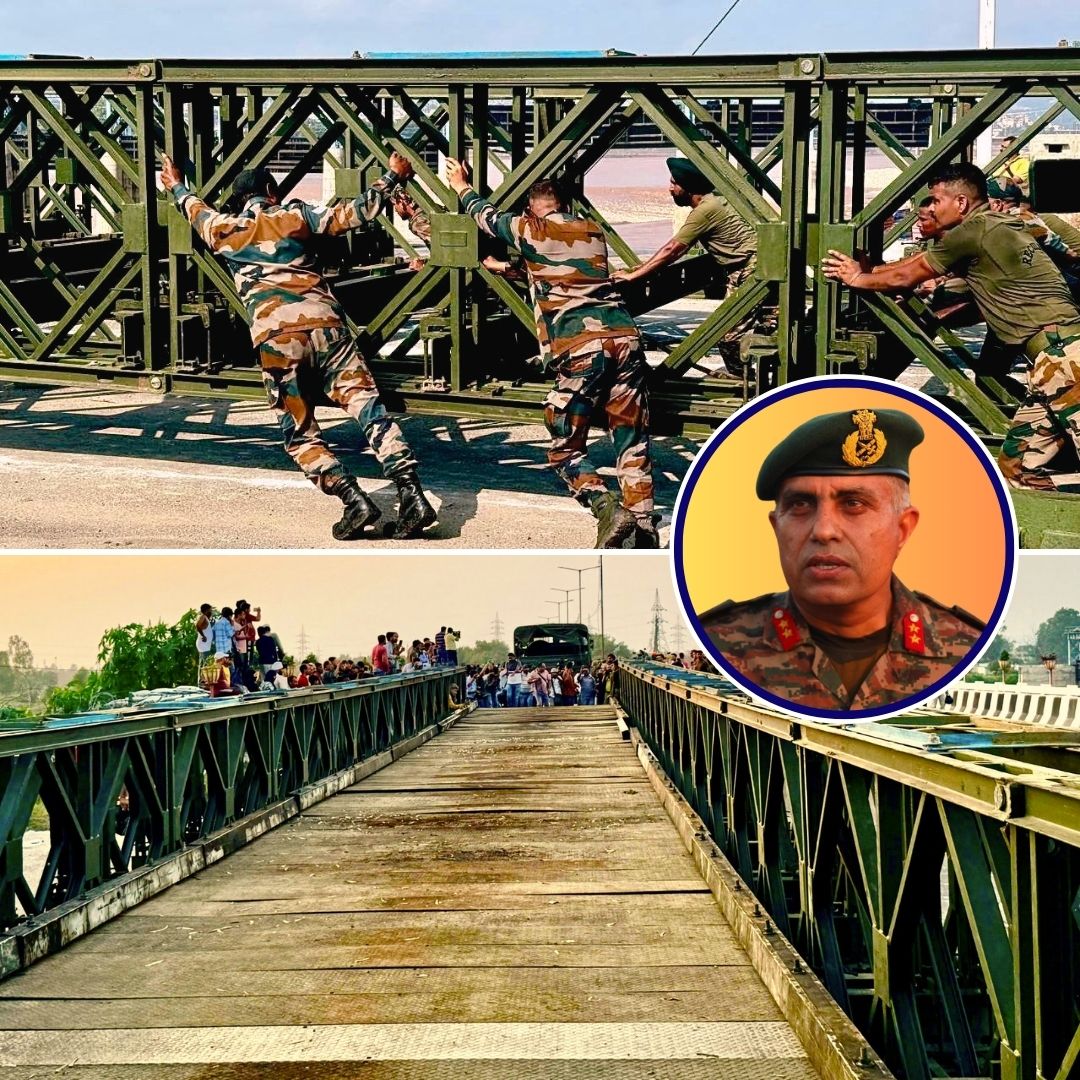In Jammu city, the Indian Army swiftly rose to the occasion by constructing a 110-foot bailey bridge over the Tawi River within 12 hours, after a section of the costly ₹147 crore fourth bridge collapsed due to intense rainfall.
The eastern portion of the bridge, an essential link for Jammu’s daily vehicular movement and supply routes, was severely damaged by the floods, cutting off critical access.
Major General Mukesh Bhanwala, General Officer Commanding (GOC) of the Tiger Division, expressed the urgency of the situation and praised the army engineers’ rapid efforts. “Despite washed-out approaches and restricted workspace, the bridge was made operational quickly to restore connectivity,” he said.
The bailey bridge, a modular steel structure developed originally for military use, is now ensuring the free flow of traffic, easing hardships faced by thousands of residents and commuters.
Floods Affect Jammu Region, Rescue and Relief Underway
The prolonged heavy rains that began on August 26 triggered flooding across Jammu city and neighbouring districts including Samba, Kathua, Pathankot, and Gurdaspur. The widespread deluge caused severe damage to infrastructure such as roads, bridges, and communication lines.
In response, the Indian Army’s Rising Star Corps, supported by the Indian Air Force helicopters, launched extensive rescue missions, saving nearly 1,000 stranded people including vulnerable groups like children and paramilitary personnel. Alongside rescue operations, medical aid, food supplies, and relief materials have been distributed to affected families through coordinated efforts with civil administration.
Notably, communication between Jammu and Srinagar was restored by laying alternative optical fibre cables, reducing disruptions to essential services in the flood-hit areas. The bailey bridge’s modular design allows rapid assembly using lightweight steel panels and transoms, enabling army engineers to build strong, temporary river crossings without heavy machinery.
Challenges and Preparedness Highlighted by Officials
Major General Bhanwala highlighted the complexities faced by army engineers in overcoming the washed-away riverbank approaches and working in confined conditions, emphasising the exemplary teamwork and resourcefulness that enabled the bridge’s quick completion.
He reassured that additional army resources remain on standby to handle any further emergencies as weather conditions persist. The incident underscores the urgent need for infrastructure that is resilient to extreme weather events, especially in flood-prone regions. Coordination between military and civilian authorities continues to be critical in mitigating the crisis and ensuring quick restoration of normalcy.
The Logical Indian’s Perspective
This episode reflects not only the dedication and agility of the armed forces in disaster management but also brings to light the increasing severity of climate-induced calamities impacting India’s vulnerable regions. While the army’s response provides immediate relief, the larger challenge remains in prevention and preparedness.
Sustainable investments in infrastructure that can withstand such climatic shocks, robust urban planning, and stronger community awareness are vital to reduce future risks. The collaboration between civil and military agencies during this crisis exemplifies the power of collective action fueled by empathy, resilience, and responsibility.
#IndianArmy #FloodRelief
— Rising Star Corps_IA (@RisingStarCorps) August 29, 2025
GOC #TigerDivision briefs on Army’s swift rescue operations in Jammu, Samba, Kathua, Pathankot & Gurdaspur, and construction of 110-ft Bailey bridge over Tawi River #Jammu @adgpi @westerncomd_IA @prodefencejammu pic.twitter.com/Y89rsaNcuR











